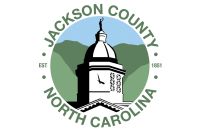New forest coalition brings once-rival groups together
 As Brent Martin stared down the barrel of an impending tug-of-war over WNC’s national forests, he dreaded yet another round in the same old fight that’s played out time and time again in his decades as an environmental advocate.
As Brent Martin stared down the barrel of an impending tug-of-war over WNC’s national forests, he dreaded yet another round in the same old fight that’s played out time and time again in his decades as an environmental advocate.
Loggers versus wilderness lovers. Horseback riders versus hikers. Hunters versus environmentalists.
Each would make their case as the forest service launched into its periodic, obligatory assessment of how the forest is managed — a sweeping four-year process that would ultimately define goals, strategies and priorities for the Pisgah and Nantahala national forests.
“The old way of doing things is everyone fights it out from their little corners and nobody gets anything they want and it is a miserable experience,” said Martin, regional director for the Wilderness Society’s Southern Appalachian headquarters in Sylva.
So he made a pitch to key players in the debate over public lands — including some archrivals — to put aside the days of diametrically opposed viewpoints.
Related Items
“Instead of fighting, we are trying to get everyone to come together and put their interests out there, and then work together for common goals,” Martin said.
The idea has quickly gained traction, and a working coalition dubbed the Nantahala-Pisgah Forest Partnership has taken off.
“If user groups can find ways to help each other get what they want out of this forest plan then everyone is going to be happier,” said Josh Kelly, a public lands field biologist with the Western North Carolina Alliance, a regional environmental nonprofit. “We can’t accomplish everything we want, but we can accomplish more if we work together than if we are all bickering over details.”
Kelly believes everyone is ready to bury the hatchet.
“In my generation a lot of people are ready to move past that and recognize the legitimacy of the other user groups in the forest,” Kelly said.
Forging a better process
The official process steering a new forest management plan will still fall under the purview of the forest service, however. The forest service will hold many, many rounds of public meetings — the officially sanctioned meetings — where stakeholders are supposed to serve up comments and input on what they want to see.
But too often at these meetings, interest groups “glom up in their own little cliques,” Martin said.
The forest service may not set out to conquer and divide, but that’s often how it played out by default in the past. Instead of a turf battle with the forest service acting as referee, why not work it out amongst themselves ahead of time?
“We can build a side track to shadow their process,” Martin said.
Martin hopes their coalition can make the official process a smoother one by hashing out areas of mutual agreement and then coming into the forest service process with a single, unified voice — rather than diluted, fractured interest groups.
“The more stakeholders that are brought to the table under this collaboration the better,” said Deirdre Lightsey, a horseback rider who travels the trails of the Pisgah and Nantahala.
Lightsey is serving on the steering committee for the Nantahala-Pisgah Forest Partnership as a representative of equestrian interests, both the Backcountry Horsemen’s Association and the N.C. Horse Council.
She believes forest users are vested in making this alternative process work, she said. They are the ones steering it and thus have buy-in.
“We are going to do what we need to do to make sure it has legs. The Wilderness Society birthed this baby, but we are all raising it,” Lightsey said.
Hopefully, recreation groups — whether it’s hikers, equestrians, mountain bikers or hunters — will realize they can’t have tunnel vision or advocate only for their own narrow recreation interests, Lightsey said. They will need to be a voice for national forests in general, not only their little slice of trail access.
“The reason we enjoy traveling in the woods so much is that the conservationists have spent oodles of time and money keeping the forests beautiful,” Lightsey said. “So we have to take on some of that responsibility.”
One new face at the table among the usual suspects of public land interest groups is the tourism industry. Martin reached out to the Blue Ridge National Heritage Area to be a part of the coalition, since the national forests are a major tourism draw for the region.
The first step for the Nantahala-Pisgah Forest Partnership is developing a charter document to lay the groundwork for the process going forward. Thanks to funding from the Community Foundation for WNC, a consultant has been hired to moderate and facilitate the process.
“We are building this thing brick by brick,” Martin said.
Officially, the forest service isn’t endorsing the coalition, avoiding the appearance that any one group will be awarded a bigger voice or preferential consideration over others.
“We are interested in getting feedback from anyone willing to share their thoughts,” said Michelle Aldridge, the acting forest service coordinator for the planning process.
Martin hopes the Nantahala-Pisgah Forest Partnership will continue to be a voice in national forest issues even after the forest planning process concludes.
“They need advocates instead of a bunch of people complaining about things,” Martin said. “The forest service doesn’t really have a constituency anymore.”
While the Pisgah and Nantahala national forests are a million acres, the age-old “tragedy of the commons” is still applicable, even at that scale.
“Anytime you have a public commons there is a risk that some group will try to take the commons away from the rest of the users and benefit to a disproportionate degree,” Kelly said. “Or there is a risk of fighting and conflict. This is chance to secure the future of this incredibly important resource.”
Help shape the future of WNC’s national forests
The forest service is in the early stages of a sweeping overhaul of how the Pisgah and Nantahala national forests are managed. The four-year process will analyze a wide spectrum of national forest issues, including every form of recreation imaginable, ecological integrity, scenic and cultural values, logging, environmental threats and wilderness area designations.
Public input is being invited to help shape these management strategies for the forests over the next 15 years.
A public workshop on the future of the national forests will be held from 9 a.m. to 3 p.m. Saturday, Oct. 5, at the N.C. Arboretum in Asheville. Participants will break into small groups to discuss aspects of the current forest management plan that should change, said Michelle Aldridge, the forest service planning specialist leading the process.
“We are looking for input about what needs to change,” Aldridge said. “What about the current direction needs to be improved?”
More than 800 people attended a dozen public meetings held across WNC in late winter and more than 400 comments were submitted during the first round of public input in the process.
“We are pretty fortunate to have active and involved stakeholders in the area. A lot of people appreciate the Pisgah and Nantahala and have strong feelings about their management, so we have a lot of public turnout,” Aldridge said.
She hopes that will continue.
To get the ball rolling before the Oct. 5 workshop, the forest service came up with a list of areas that likely need revising in the new forest plan, garnered in part from the public input to date.
• How should large mountain bike festivals in the forests be managed?
• Logging in national forests has been dramatically curtailed — has it been curtailed too much?
• In light of burgeoning outdoor recreation, how should conflicts between competing forms of recreation be handled?
• Are trails being properly maintained?
• Should the forest service take a more active role in protecting rare ecosystems, like balds and bogs?
• Should new Wilderness Areas be designated?
The last forest plan was finalized in 1987. But there are new issues now that weren’t around then: climate change, the advent of cell towers and wind turbines, the reintroduction of elk in the landscape or even new types of recreation like geocacheing. All these will need to be wrapped into the new forest plan as well.
Last week, as another precursor to the big workshop on Oct. 5, the forest service released a monster document — nearly 500 pages including attached reports on sub-topics — known as the “draft forest assessment.”
It provides a baseline for the current state of the Pisgah and Nantahala national forests, and areas for consideration in the forest plan.
To read the report, and all about the forest plan process, go to www.fs.usda.gov/goto/nfsnc/nprevision.









